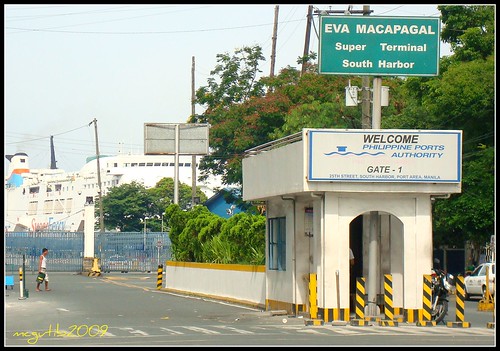The Port of Manila has a diverse economy. In addition to housing the Philippines' major seaport, it is an important center for publishing and manufacturing. Products manufactured in the Port of Manila include textiles, chemicals, clothing, electronics, watches, leather goods, shoes, and iron and steel. Local businesses process commodities for export, including plywood, rope, refined sugar, coconut oil, and copra. The food, beverages, and tobacco sectors employ many of the city's residents.
With more than a million visitors each year, tourism is a thriving and important economic sector in the Port of Manila. Except for the Port of Manila, every district in the city has its own public market where local commerce is busy, particularly in the early morning. The urban renewal program includes refurbishing some of these markets. The Port of Manila also has plenty of modern shopping malls and chain stores.
The Philippine Ports Authority (PPA), Ports District Office for Manila/Northern Luzon is the governing body for the Port of Manila. The PPA is committed to providing reliable services, sustaining the development of port communities and the environment, and being a model corporate-government agency.
The PPA's priority objectives include establishing, developing, regulating, managing, and operating a rationalized national port system that supports trade and development for the nation of the Philippines. To meet these goals, the PPA will modernize at least ten ports by the year 2010, improve port services, reduce costs for port customers, integrate port and community development and operation, and provide a working environment conducive to improved productivity and job satisfaction.
The Port of Manila is the Philippines largest and busiest port. Located on one of the world's best natural harbors, the Port of Manila is the world's shipping gateway to the Philippines. The Port of Manila International Cargo Terminal (MICT) is one of the most active seaports in Asia.
In 2006, the Port of Manila served a total of 5325 vessels, including 2442 foreign vessels and 1911 domestic vessels. The Port of Manila's North Harbor served 1911 domestic vessels and 208 foreign vessels. The South Harbor served 1007 foreign and 764 domestic vessels. The Manila International Cargo Terminal (MICT) served 1435 foreign vessels.
In 2006, the Port of Manila handled a total of 44.2 million metric tons of cargo, including 20.7 million metric tons of domestic and 23.5 million metric tons of foreign cargo. The Port of Manila's North Harbor handled 16.7 million metric tons, including 13.8 million metric tons of domestic and almost three million metric tons of foreign cargo. The South Harbor handled a total of 12.9 million metric tons of cargo, including 6.9 million metric tons of domestic and over six million metric tons of foreign cargo. The MICT handled almost 14.5 million metric tons of cargo, including 924 thousand metric tons of domestic cargo.
In 2006, the Port of Manila handled a total of almost 23.5 million metric tons of foreign cargo. The Port of Manila International Cargo Terminal handled 14.5 million metric tons of foreign cargo, while the North and South Harbors handled over nine million metric tons.
In 2006, the Port of Manila hosted a total of 3.1 million passengers. More than 1.3 million passengers used the North Harbor, and almost 1.8 million used the South Harbor.
The entrance to the Bay of Manila is 19 kilometers wide, and it expands to 48 kilometers in width inside the harbor. The Port of Manila consists of three main areas: Manila North (the North Harbor), Manila South (South Harbor), and Manila where the Manila International Cargo Terminal is located.
The Port of Manila International Cargo Terminal (MICT) is operated by International Container Terminal Services, Inc. The MICT is the company's flagship operation. The company won a 25 + 25 year concession to operate the Port of Manila's MICT in 1988 in the country's first port privatization effort. The company is responsible for managing, operating, and administrating the Port of Manila's MICT; planning, developing, and constructing MICT facilities; supplying all equipment; and assuming investment risk in the MICT. Since the company took over, the Port of Manila's MICT annual cargo-handling capacity has increased five-fold and an integrated real-time IT terminal control system has been implemented.
The Port of Manila's MICT handles much of the of the cargo through in the Port of Manila. The terminal covers an area of 67.7 hectares and has annual cargo-handling capacity for 1.5 million TEUs. The berth at the MICT in the Port of Manila is 1300 meters long, and it contains five berthing positions with alongside depths from 10.5 to 14 meters. The Container Yard is 37 hectares, and the Container Freight Station covers 2.7 hectares. The MICT offers 270 220-volt and 702 440-volt reefer points. The empty container depot covers five hectares and has capacity for 9184 TEUs. The hazardous cargo control area covers 10.5 thousand square meters and has capacity for 500 containers. The Port of Manila's MICT also has two on-site maintenance workshops.


No comments:
Post a Comment